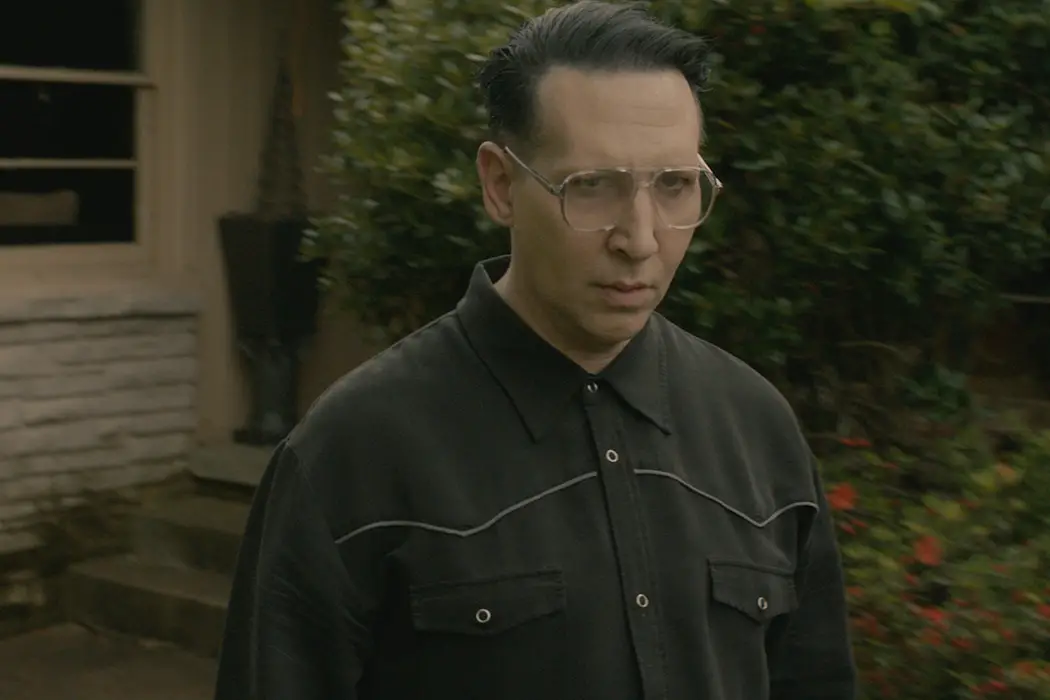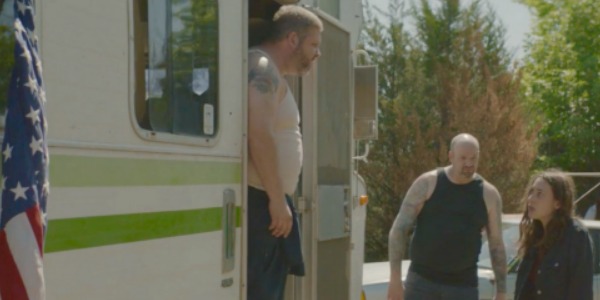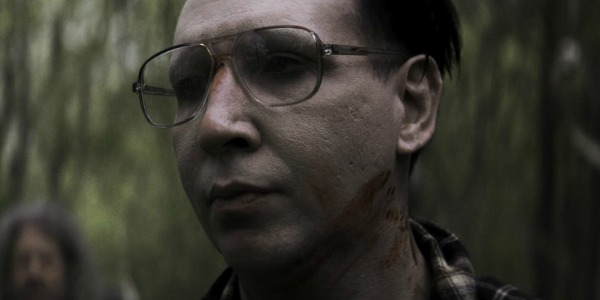LET ME MAKE YOU A MARTYR: The American South Is Hell On Earth

Alex Arabian is a freelance film journalist and filmmaker. His…
Writers and directors Corey Asraf and John Swab’s feature debut, Let Me Make You a Martyr, is a nightmarish vision of the detriment of the southern United States. Shot in the outskirts of Tulsa, Oklahoma near Green Country, the film emerges itself in the heart of a shockingly corrupt vision of the “Bible Belt” of America. With an economy that has struggled to shed its oil dependency since the industry experienced a sharp downturn some 40 years ago, Tulsa, and Oklahoma as a whole, is now run by the tech, alternative energy, finance, and aviation sectors. Big business has run out the working class, increasing crime and drug addiction.
Let Me Make You a Martyr focuses on this crime and drug addiction that plagues the “Bible Belt,” portraying a particular demographic, that of the devolved southern white male, stuck in time, ideologically unchanged for 400 years, rotting in its own ancestry and backwards heritage. It is a difficult film to watch, and one that isn’t worth enduring its drawn out, 102-minute run-time.
Asraf and Swab’s imagery and direction, however beautiful and adept it may be, cannot overcome their heavy-handed, narratively confused script and its skin-deep characters. Not even a phenomenally understated performance from Marilyn Manson can save Let Me Make You a Martyr from feeling like a missed opportunity.
A Focus On Micro Over Macro
The film is told in retrospect, with our martyr, Drew Glass’s (Niko Nicotera) confession to what appears to be a government agent named Charon (Michael Potts) serving as its narrative. The audience slowly discovers Drew’s life story, told in a non-linear fashion through Nicotera‘s raspy mumbling. Drew’s is a tragic story filled with rape, abusive foster care, sex trafficking, drug abuse, and love. One of these things is not like the other.
Drew has come back to Green Country to save his foster sister and romantic love interest, June Glass (Sam Quartin), from their kingpin crime boss adoptive father, Larry Glass (Mark Boone Junior in a strong turn). His past comes back to haunt him.
Let Me Make You a Martyr has a lean plot, and the characters aren’t developed enough to carry it. For instance, the viewer gets a vague notion that June was brought here from another country as a child as a sex slave; that is the only depth her character has, giving an underutilized Quartin very little material to build upon and use as her own. This also creates an underdeveloped, rushed sub-narrative with a missing young child that gets about 5 minutes of screen time.

There are autobiographical elements to Drew’s background that are extremely personal to writer and director, Swab. His bravery in telling his story is bold and commendable. One has to wonder, however, if the film could have offered insights into why this area of the United States has become a third world country within a country. This is one of the more reclusive and reserved parts of the country. As such, the world needs to learn about this region, acknowledge their voices, but most importantly, extrapolate everything they can from its history so as to make sure it doesn’t repeat itself.
Let Me Make You a Martyr won’t provide any kind of answers or try to rationalize a predominantly white population filled with racist, hypocritical, and dangerously conservative Christian extremism. It wouldn’t feel necessary to if the film hadn’t introduced the anti-anti-immigration subtext. Martyr wouldn’t warrant insight into the world that surrounds the story if its plot was compelling enough.
Religious Innuendos Aplenty
Let Me Make You a Martyr relies on about three lonely one-liners that stand out. However poetic these sentences may be, they are the only coherent part of the dialogue. They express Drew’s inner-thoughts, creating heavy-handed sacrilegious subtexts and themes.
This part of the United States is ridden with opioid addiction more than any other region in the world. Asraf and Swab create parallels between the dangerous and self-destructive wide nets that both religion and drug abuse cast. Through these one-liners, the audience becomes painfully aware that, in Martyr’s world, heroin is god, and the criminal underbelly of the southern and Midwestern America its loyal disciples.

Oh yeah, and in this particular inferno, Marilyn Manson’s Native American character, Pope, is the devil. Asraf and Swab, I know you’re better than that. Pope is an interesting character, but do you have to make the only other minority character besides Charon a villain? Does he have to be the murderous psychopath hellbent on bringing order to this society, however backwards it may be?
It’s a bit hard to add nuance to a story titled Let Me Make You a Martyr. There are questions that the story excavates, undoubtedly. Does god exist? Is hell here amongst us on earth? Is there an afterlife at all? Can humankind find its humanity? Is humanism over religion the solution to destructive, conservative ideologies? Again, if you are seeking existential answers, you won’t find any in Drew’s narrow, particular life experience.
Manson Isn’t Enough
Somewhere along the line the intensity stops building, and the film loses steam, becoming monotonous. Cinematographer Jeff Melanson’s unrelentingly dim, almost opaque filter doesn’t help maintain interest. The only constant in Let Me Make You a Martyr is renowned composer, Gingger Shankar’s (The Passion Of The Christ, Circumstance, American Fable) pulsating score.

Manson has about 10 minutes of screen time, and it’s far too little. He absorbs each second of every frame. The controversial rock star has a natural charisma, but he disappears into this world with unsettling but fantastic ease. It’s a shame, because, aside from Asraf and Swab’s striking direction and Shankar’s pitch-perfect score, Manson’s performance is the best thing about Let Me Make You a Martyr.
Viewers can expect arresting visuals of the American Green Country and “Bible Belt,” decent performances surrounding a mesmerizing but mostly absent Manson, and excessive boredom. By the end of the film, if audiences make it that far, viewers will be antsy for Drew to finally finish his drawn-out story so that they can leave this suffocating, vapid world. The most prominent emotion Martyr will elicit is likely frustration.
How did Let Me Make You a Martyr settle with you? What is your interpretation of the unique ending?
Let Me Make You a Martyr was released on digital streaming services on June 6 in the US.
https://www.youtube.com/watch?v=s74MxBRom2M&t=11s
Does content like this matter to you?
Become a Member and support film journalism. Unlock access to all of Film Inquiry`s great articles. Join a community of like-minded readers who are passionate about cinema - get access to our private members Network, give back to independent filmmakers, and more.
Alex Arabian is a freelance film journalist and filmmaker. His work has been featured in the San Francisco Examiner, The Playlist, Awards Circuit, and Pop Matters. His favorite film is Edward Scissorhands. Check out more of his work on makingacinephile.com!












